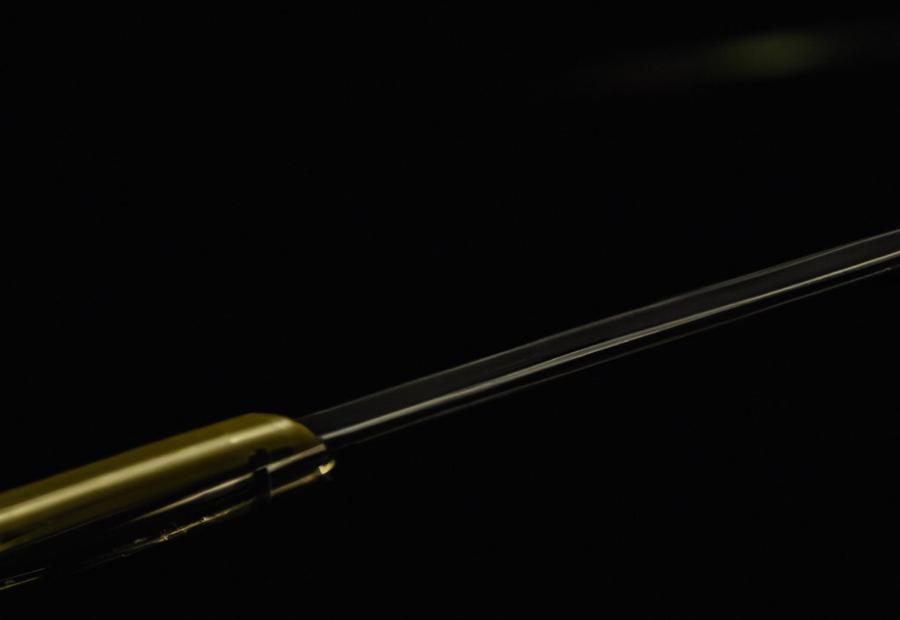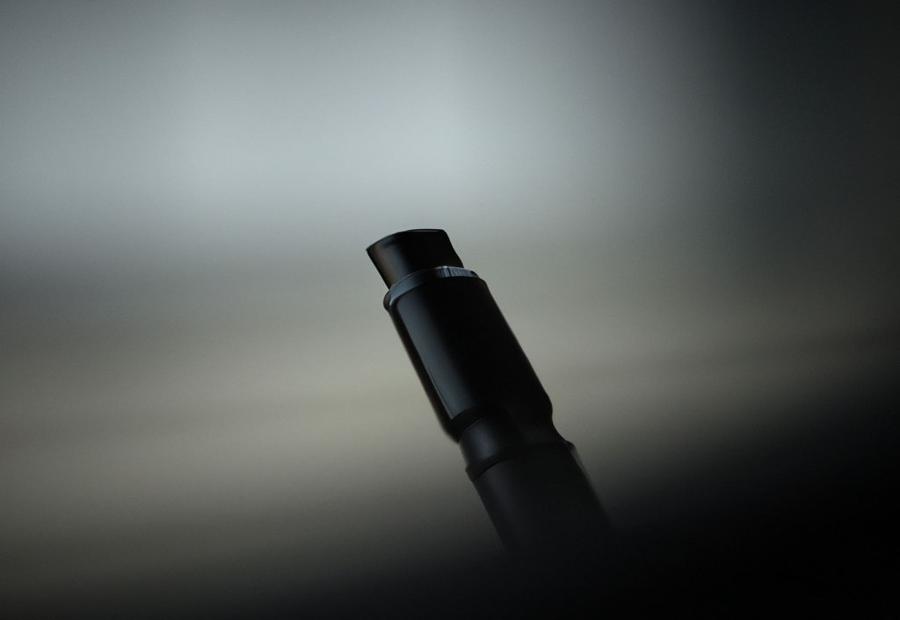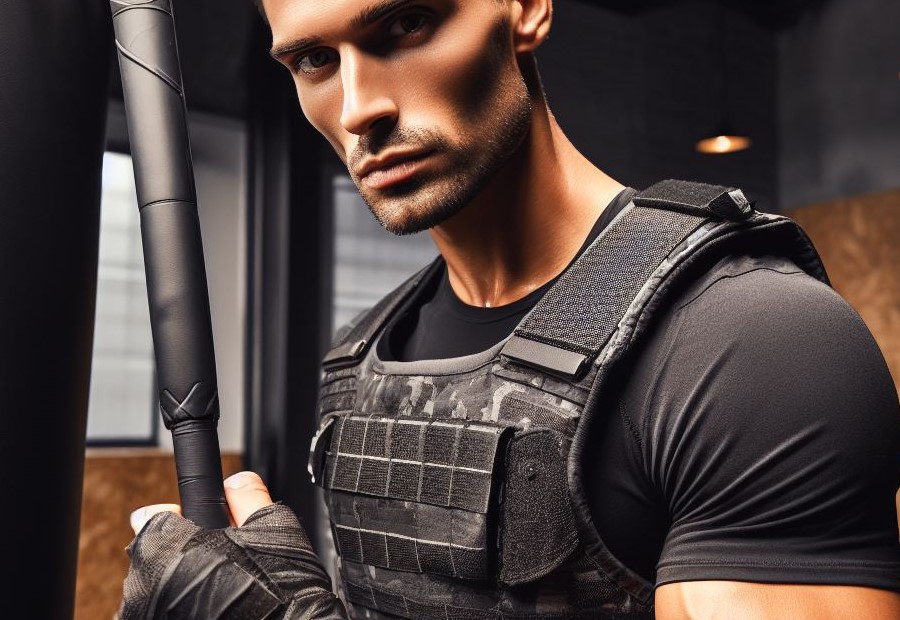Tactical batons are essential tools used in various fields such as law enforcement, self-defense, and military operations. These versatile instruments have a fascinating history and serve multiple purposes.
In this article, we will explore the world of tactical batons, including their types, components, uses, training techniques, and legal considerations.
By delving into these topics, this article aims to provide a comprehensive guide to what a tactical baton is, its various types, uses, training techniques, and legal considerations.
Whether you are interested in self-defense, law enforcement, or simply expanding your knowledge, understanding tactical batons is valuable information.
What is a Tactical Baton?

Photo Credits: Paintballbuzz.Com by Dylan Anderson
The world of tactical batons holds an intriguing history, filled with moments of innovation and practicality. Join us as we explore the captivating story behind these versatile tools.
From their early origins to modern-day applications, we’ll uncover the evolution of tactical batons and the impact they’ve had on various disciplines. Get ready to delve into the fascinating sub-sections that shed light on the history and development of tactical batons.
Let’s dive in and uncover the hidden gems of this vital tool.
History of Tactical Batons
Tactical batons have a long and illustrious history, spanning back centuries. These indispensable tools have been refined over time to serve as crucial implements for law enforcement and self-defense.
In the 1800s, batons found their primary purpose in the hands of military forces, who utilized them for crowd control and maintaining order. Crafted mainly from wood or metal, these batons boasted a fixed length.
However, with advancements in weapon technology, batons adapted to meet the ever-changing demands.
The mid-20th century brought about the introduction of expandable batons, revolutionizing the field for law enforcement officers. This new breed of batons provided a compact and convenient alternative, easily extendable or retractable for enhanced portability and maneuverability.
The rich history of tactical batons showcases a continuous pursuit of improving their design and functionality.
Presently, batons are crafted using durable materials such as steel or aluminum alloys, ensuring robustness and reliability.
They are offered in a range of lengths and configurations, including side-handle batons that provide enhanced control and impact.
Comprehending the history of tactical batons holds great significance in understanding their development and usage. It underscores the necessity for effective tools in the realms of law enforcement and self-defense, as well as the ongoing endeavors to create batons that are not only efficient but also safe to employ.
By tracing their evolution, we can truly appreciate the remarkable advancements achieved in these indispensable instruments.
Types of Tactical Batons

Photo Credits: Paintballbuzz.Com by Michael Taylor
When it comes to tactical batons, there are various types that cater to different needs and situations.
In this section, we’ll be diving into the world of tactical baton types, including the expandable baton, fixed-length baton, and the various components such as the handle, shaft, grip, and end cap.
Get ready to explore the diverse range of options and learn how each type delivers its own unique advantages in the realm of self-defense and security.
Expandable Baton
An expandable baton is a versatile tool used in various fields for self-defense, law enforcement, and security purposes. It offers several advantages due to its unique design and functionality.
- Compactness: One of the key benefits of an expandable baton is its compact size when collapsed. This makes it easy to carry and conceal, allowing for quick and discreet deployment when needed.
- Extendable shaft: The expandable baton features a telescopic shaft that can be extended to a desired length with a swift, flicking motion. This allows the user to quickly adapt to different situations and create distance between themselves and potential threats.
- Retractable design: The retractable nature of the baton enables easy retraction after use. This feature enhances user convenience and minimizes the risk of accidental injury or damage.
- Durable construction: Expandable batons are typically made of high-quality materials such as steel or aluminum, ensuring durability and resistance to wear and tear. This makes them reliable tools for repeated use.
- Effective striking surface: The expanded baton provides a solid striking surface for self-defense or control techniques. It can be used to deliver forceful strikes to vulnerable areas, effectively subduing or incapacitating assailants.
- Legal considerations: It is important to familiarize yourself with local laws and regulations regarding the carrying and use of expandable batons. Ensure that you comply with any legal requirements or restrictions in your area.
An expandable baton is a valuable tool for personal safety and professional use. Its compactness, extendable shaft, and durability make it a reliable choice in various scenarios where self-defense or control techniques may be necessary.
Fixed-Length Baton
A fixed-length baton, as the name suggests, is a tactical baton that cannot retract or extend its length. It is important to consider the following key features and uses of a fixed-length baton:
- Length: Typically, a fixed-length baton has a specific length, such as 21 inches or 26 inches.
- Sturdiness: Fixed-length batons are renowned for their durability and strength, often crafted from solid materials like steel or aluminum alloy.
- Weight: Due to their solid construction, these batons may be heavier compared to expandable batons.
- Handling: Effective use of fixed-length batons requires users to possess a good grip and employ proper techniques.
- Self-defense: Fixed-length batons are commonly utilized for self-defense purposes, offering a solid striking tool to fend off attackers.
- Law enforcement: Law enforcement agencies frequently employ fixed-length batons as non-lethal weapons to subdue individuals who pose a threat without resorting to firearms.
- Military and security: The fixed length and solid construction of these batons make them suitable for military and security personnel in various operational scenarios, providing reliability and robustness.
When choosing a fixed-length baton, it is crucial to select one that aligns with your needs and preferences.
Consider factors such as length, weight, and material.
Additionally, proper training in striking techniques, baton retention, and tactical baton disarming is essential for safe and effective use. Always ensure compliance with local laws and regulations concerning the carrying and use of a fixed-length baton.
Remember, your choice of a fixed-length baton should be based on your specific requirements and comply with legal considerations to prioritize your safety and the safety of others.
Handle
The handle of a tactical baton is a crucial component that provides a secure grip and control during use. Made of durable materials such as rubber, thermoplastic, or aluminum, the handle is designed to fit comfortably in the hand, allowing for easy maneuverability.
The handle of a tactical baton significantly enhances the user’s ability to strike effectively and accurately. Its ergonomic design ensures a firm hold, preventing slips or loss of control even in high-stress situations.
For improved grip strength, the handle may feature textured patterns or grooves.
When selecting a tactical baton, it is essential to consider the handle design that best suits your needs. Some handles may be adjustable in length, allowing for customization based on individual preferences or requirements.
Moreover, certain handles may incorporate additional features such as a lanyard or wrist strap for added security and retention.
To ensure optimal performance and durability, it is highly recommended to choose a tactical baton with a high-quality handle. This ensures a reliable and comfortable grip, enabling effective self-defense, law enforcement, or military application.
Shaft
The shaft is a crucial component of a tactical baton, as it provides stability and durability. Typically constructed from high-strength materials like steel or aluminum, the shaft ensures the baton can withstand impact and pressure during use.
The length of the shaft varies depending on the type of baton, with expandable batons having a shorter collapsed length and a longer extended length.
The primary purpose of the shaft in a tactical baton is to be rigid and robust, enabling effective strikes and defensive maneuvers.
It offers the necessary leverage and control for users to handle the baton proficiently in various situations. The grip of the baton is usually located on the shaft, providing a comfortable and secure hold.
Apart from ensuring structural integrity, the shaft of a tactical baton can feature specific designs for different applications.
For instance, some batons may have grooves or textured surfaces on the shaft to enhance grip and prevent slippage during use. Others may have a tapered or flared end near the grip to improve handling and maneuverability.
When choosing a tactical baton, it is essential to consider the design and quality of the shaft. A strong and well-designed shaft guarantees that the baton can endure the demands of its intended use and deliver reliable performance when needed.
Historically, batons have served as tools, weapons, and symbols of authority, dating back to ancient civilizations. The modern tactical baton has evolved to meet the requirements of law enforcement, military, and security personnel, providing them with a versatile and effective tool for self-defense and control.
Grip
When it comes to the grip of a tactical baton, it plays a crucial role in ensuring effective and secure handling of the baton.
Here are some key points to consider:
- Texture: The grip of a tactical baton should have a textured surface to provide a firm and non-slip hold, even in high-stress situations.
- Ergonomics: A comfortable grip is essential for prolonged use. Look for batons that have an ergonomic design, allowing for a natural and comfortable hand position.
- Material: The grip material should be durable and resistant to wear and tear. Common materials used for grips include rubber, polymer, and thermoplastic elastomer.
- Size: The grip should be proportionate to the size of your hand, allowing for a secure and confident hold. It should neither be too narrow nor too wide.
- Retention: Some tactical batons have additional features like retention clips or straps that can further secure the baton in your hand, preventing accidental drops during use.
- Training: It’s important to receive proper training in grip techniques for a tactical baton. This includes learning the correct hand placement and grip strength to maximize control and effectiveness.
When choosing a tactical baton, prioritize the grip that offers a secure and comfortable hold. Remember to practice proper grip techniques during training sessions to ensure you can effectively use the baton when needed.
End Cap
The “End Cap“ is a crucial component of a tactical baton, providing both functionality and durability. It is positioned on one end of the baton and serves multiple purposes.
| Function | Importance |
| Protection | The end cap serves as a protective covering for the internal components of the baton. It plays a vital role in preventing dirt, debris, and moisture from entering the baton, which could potentially compromise its effectiveness and lifespan. |
| Grip Enhancement | The end cap is specifically designed to offer a secure grip for the user. It is usually textured or rubberized, improving grip and control during handling to ensure that the baton doesn’t slip out of the user’s hand, especially in high-stress situations. |
| Striking Surface | The end cap can also serve as a striking surface. In certain batons, it is weighted or reinforced, making it perfect for striking and inflicting impact force when necessary. |
The end cap is a vital aspect to consider when selecting a tactical baton. It should possess durability, resistance to wear and tear, and be designed to withstand the demands of challenging situations.
An effective end cap enhances the overall functionality and usability of the baton.
Uses of a Tactical Baton

Discover the incredible uses of a tactical baton that go beyond mere self-defense. Within this section, we’ll explore its applications in law enforcement, military, and security.
Unveil the practicality and versatility of this powerful tool as we delve into its role as a trusted companion for professionals in various fields.
Strap in and get ready to uncover the wide-ranging utilization of the tactical baton that goes far beyond personal protection.
Self-Defense
Self-Defense is an important aspect of using a tactical baton. Here are some key points to consider:
- Physical protection for self-defense: A tactical baton is a versatile tool that can be used to defend yourself against potential threats. Its sturdy construction and solid grip provide you with a reliable and effective means of protection.
- Skill development for self-defense: To effectively use a tactical baton for self-defense, it is crucial to receive proper training. Learning striking techniques, baton retention, and tactical baton disarming techniques will enhance your proficiency in defending yourself.
- Confidence booster for self-defense: Carrying a tactical baton can boost your confidence, knowing that you have a reliable and efficient tool to defend yourself in case of an emergency situation. This sense of confidence can deter potential attackers.
- Legal considerations for self-defense: When using a tactical baton for self-defense, it is essential to be aware of the legal framework surrounding its use. Understanding the laws and regulations regarding the carrying and use of a tactical baton in your jurisdiction is crucial to ensure you stay within legal boundaries.
- Personal safety in self-defense: Incorporating a tactical baton into your self-defense strategy can significantly enhance your personal safety. It provides you with an additional layer of protection and can effectively incapacitate an attacker, allowing you to escape from dangerous situations.
Using a tactical baton for self-defense should always be done responsibly and with proper training. It is crucial to prioritize personal safety and stay within the legal boundaries set by your jurisdiction.
Law Enforcement
Law enforcement officers often rely on tactical batons as an essential tool in their line of duty. These batons are designed to be durable and effective for various law enforcement tasks.
- Tactical batons are commonly used by law enforcement personnel for self-defense purposes. They provide officers with a non-lethal option to subdue suspects without resorting to firearms.
- Law enforcement officers also use tactical batons to gain control over aggressive individuals during arrests or confrontations. The batons can be used to strike targeted areas on the suspect’s body, helping to immobilize and restrain them.
- In addition to physical force, the presence of a tactical baton can serve as a deterrent, potentially preventing situations from escalating into violence.
It is important for law enforcement agencies to provide training on the proper use of tactical batons to ensure effective and safe deployment. Officers must be proficient in striking techniques, baton retention, and tactical baton disarming.
Fact: According to a study conducted by the FBI, the use of tactical batons by law enforcement officers has been successful in reducing the need for lethal force in certain situations, protecting both officers and suspects.
Military and Security
| Military Use of Tactical Batons |
| Tactical batons are widely used in military and security operations for various purposes. |
| 1. Crowd Control: Tactical batons are effective tools for managing and controlling crowds during military operations. They can be used to maintain order and prevent individuals from breaching secure areas. |
| 2. Close Combat: In close combat situations, tactical batons provide military personnel with a non-lethal option for subduing and incapacitating opponents. They can be used to deliver powerful strikes to disable enemies without causing permanent harm. |
| 3. Self-Defense: Tactical batons are essential for military personnel to defend themselves in dangerous situations. They provide a compact and easily deployable tool for warding off physical threats and protecting oneself. |
| 4. Vehicle Checkpoints: Military personnel often use tactical batons during vehicle checkpoints to inspect and search vehicles. The batons can be used to tap and listen for hidden compartments or suspicious objects. |
The use of tactical batons in military and security operations has a long history. From ancient times, soldiers have relied on various types of batons to maintain order, defend themselves, and carry out their duties.
In modern times, advancements in material technology and design have led to the development of highly efficient and versatile tactical batons that cater to the specific needs of military and security personnel.
These batons are designed for durability, portability, and ease of use in demanding environments. They have become indispensable tools in military and security operations, providing personnel with a non-lethal means of control, self-defense, and maintaining security.
The military and security sectors continue to rely on these reliable and effective tools to ensure the safety and success of their missions.
Training and Techniques for Using a Tactical Baton

Looking to master the art of using a tactical baton?
In this section, we’ll dive into the various training and techniques you need to effectively wield this powerful tool.
From striking techniques to baton retention and even tactical baton disarming, we’ll explore the skills and knowledge necessary to handle a tactical baton with confidence.
Get ready to enhance your self-defense skills and learn how to maximize the potential of this versatile weapon.
Let’s delve into the world of tactical baton training!
Striking Techniques
When it comes to using a tactical baton, mastering striking techniques is crucial. These Striking Techniques ensure maximum effectiveness and efficiency in self-defense or law enforcement situations. Here are some common striking techniques:
- Straight strike: A direct strike to the target, using the top end of the baton, can incapacitate an opponent quickly and efficiently.
- Upward strike: A strike from a low angle to an upward direction, targeting vulnerable areas like the chin or throat.
- Side strike: A strike delivered from the side of the body, aiming at the head, ribs, or legs of an attacker.
- Hook strike: This technique involves a circular or hook-like motion, striking the opponent’s limbs, joints, or neck.
- Downward strike: Striking straight down with force, targeting the head or shoulders of an adversary.
Remember, practice and training are essential to mastering these striking techniques and using a tactical baton effectively in real-life situations.
A police officer trained in striking techniques with a tactical baton found himself in a dangerous confrontation with an armed suspect. With quick reflexes, he delivered a powerful straight strike to the suspect’s arm, disarming him and preventing a potentially tragic outcome.
The officer’s proficiency in striking techniques helped him overcome the threat and maintain control of the situation.
Baton Retention
Baton Retention Techniques for Effective Use and Self-Protection
When it comes to using a tactical baton, baton retention plays a vital role. To ensure that you maintain control of your baton during confrontations, it is important to focus on certain key aspects.
These include having a proper grip, positioning your hand correctly, learning and practicing specific retention techniques, maintaining physical strength, and regularly training and practicing.
Having a firm and secure grip on the handle of the baton is crucial. This prevents the baton from slipping out of your hand when you need it the most. By placing your hand correctly on the shaft, you guarantee optimal control and maneuverability.
Avoiding hand placement too close to the end cap or too far from the handle is essential to avoid hindering your ability to retain the baton.
To enhance your baton retention skills, it is vital to learn and practice various techniques specifically designed for this purpose. These techniques involve the use of your body and other hand to protect and secure the baton from being dislodged or taken away by an opponent.
Physical strength and stamina are key components in resisting attempts to disarm you and maintaining a strong grip. Regular strength training exercises will significantly improve your ability to retain the baton.
To become proficient in baton retention, regular training and practice sessions are indispensable. Engaging in repetition and simulated scenarios will help build muscle memory and ensure quick reflexes during real-life situations.
Tactical Baton Disarming
When it comes to tactical baton disarming, it’s crucial to possess the necessary skills and techniques to guarantee your safety.
Here are some steps to consider:
- Stay calm and focused during the tactical baton disarming encounter.
- Assess the situation and identify potential escape routes for tactical baton disarming.
- Attempt to de-escalate the situation verbally before resorting to physical action during tactical baton disarming.
- When disarming an assailant with a tactical baton, aim to control their weapon hand skillfully.
- Utilize quick and decisive movements to create distance and prevent further attacks during tactical baton disarming.
- Redirect the assailant’s force by redirecting their strikes or dislodging the tactical baton from their grip.
- Disable the assailant by targeting vulnerable areas such as the wrist, elbow, or shoulder during tactical baton disarming.
- Once you have successfully disarmed the attacker, ensure your own safety and the safety of others in the vicinity during tactical baton disarming.
- Report the tactical baton disarming incident to the appropriate authorities and seek medical attention if necessary.
Remember, effectively disarming an individual with a tactical baton requires practice and training. It is vital to familiarize yourself with self-defense techniques and seek professional guidance to enhance your tactical baton disarming skills.
Legal Considerations for Carrying and Using a Tactical Baton

When it comes to carrying and using a tactical baton, there are important legal considerations for you to keep in mind.
It is essential to understand the laws in your specific jurisdiction regarding the possession and use of such a weapon. Some key legal considerations include:
Restrictions on carrying: Certain areas or locations, such as schools or government buildings, may have strict regulations regarding the possession of a tactical baton. Make sure to familiarize yourself with these restrictions before carrying one.
Self-defense laws: Laws surrounding self-defense vary from place to place. It is crucial to know when and how you can use a tactical baton for self-defense purposes. In many jurisdictions, the use of force must be proportionate and reasonable given the circumstances.
Training and certification: Some jurisdictions may require individuals to undergo specific training or obtain certifications before carrying a tactical baton. Ensure you meet any training or certification requirements set forth by your local authorities.
Frequently Asked Questions
What is a tactical baton?
A tactical baton is a cylindrical club made of various materials such as wood, rubber, plastic, or metal. It is commonly used by law enforcement officers, military personnel, and security guards for self-defense and compliance purposes.
How is a tactical baton used?
A tactical baton can be used defensively to block and strike or offensively to jab or bludgeon. It can also be used for non-weapon purposes like breaking windows or searching suspects’ pockets.
What are the advantages of an expandable baton?
An expandable baton, such as an automatic expandable baton, offers greater convenience and safety. It is harder to grab and hold onto, making it a good choice for self-defense. Additionally, it can be easily carried and quickly deployed when needed.
What are the key factors to consider when choosing a tactical baton?
When choosing a tactical baton, it is important to consider factors such as the material used (e.g., high-strength materials like 4140 steel or 7075 T6 aluminum for long-term durability), the presence of a hard striking surface, a secure grip, smooth operation, and the appropriate size for the intended use.
Are there any legal restrictions on owning and carrying a tactical baton?
Yes, the laws regarding the use and carry of batons vary from state to state. It is important to check the laws in your state regarding baton use and carry.
For example, expandable batons are illegal in California, but legal to own in Massachusetts, New York, and Washington D.C. Collapsible batons, on the other hand, are legal to carry in most states except for California.
What additional accessories can enhance the effectiveness of a tactical baton?
To enhance the effectiveness of a tactical baton, you can consider accessories such as a good scabbard for secure and quick access, optional caps for improved grip and leverage, and specialized glass-breaking tips to transform the baton into a life-saving extrication tool.

